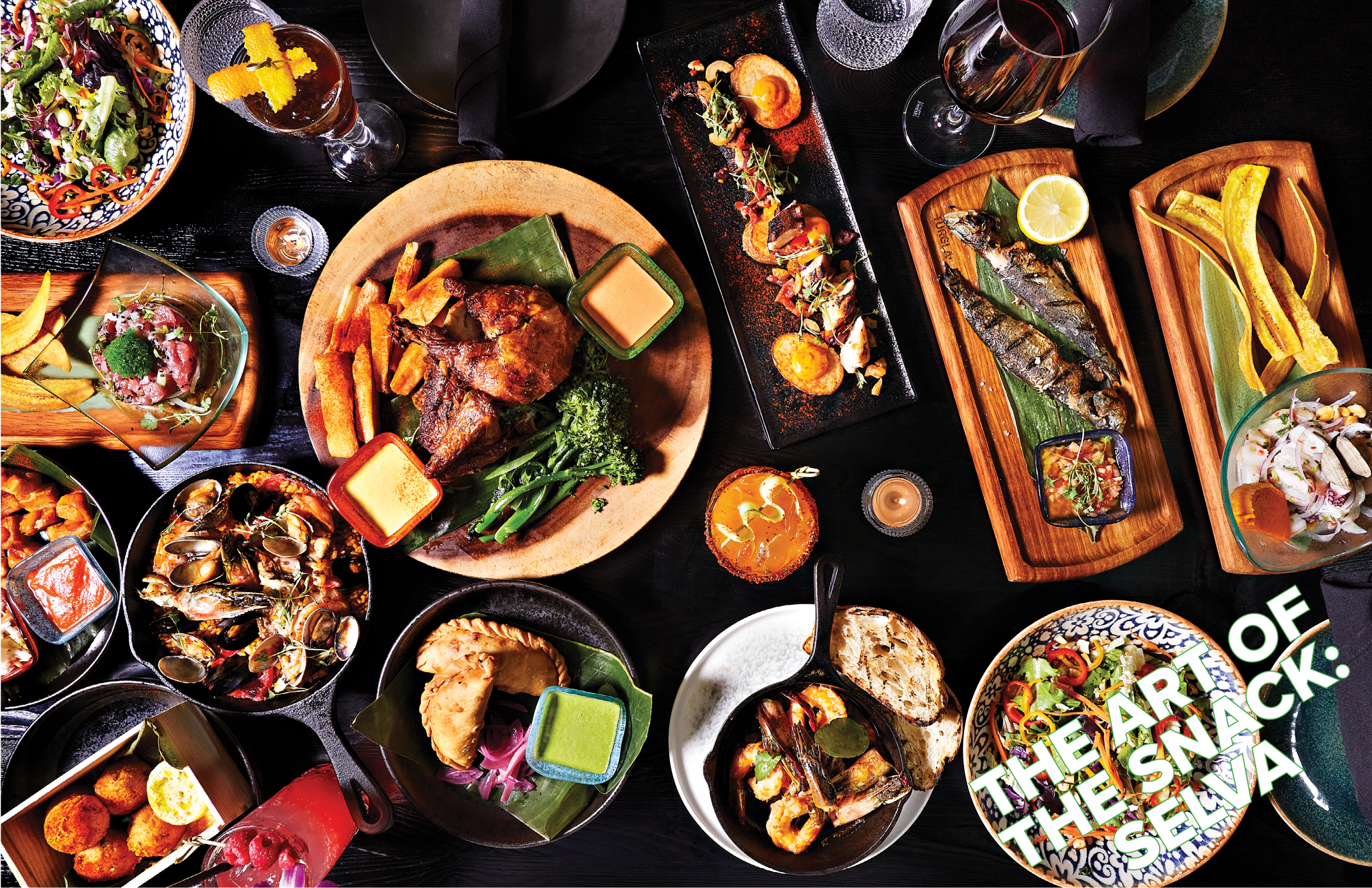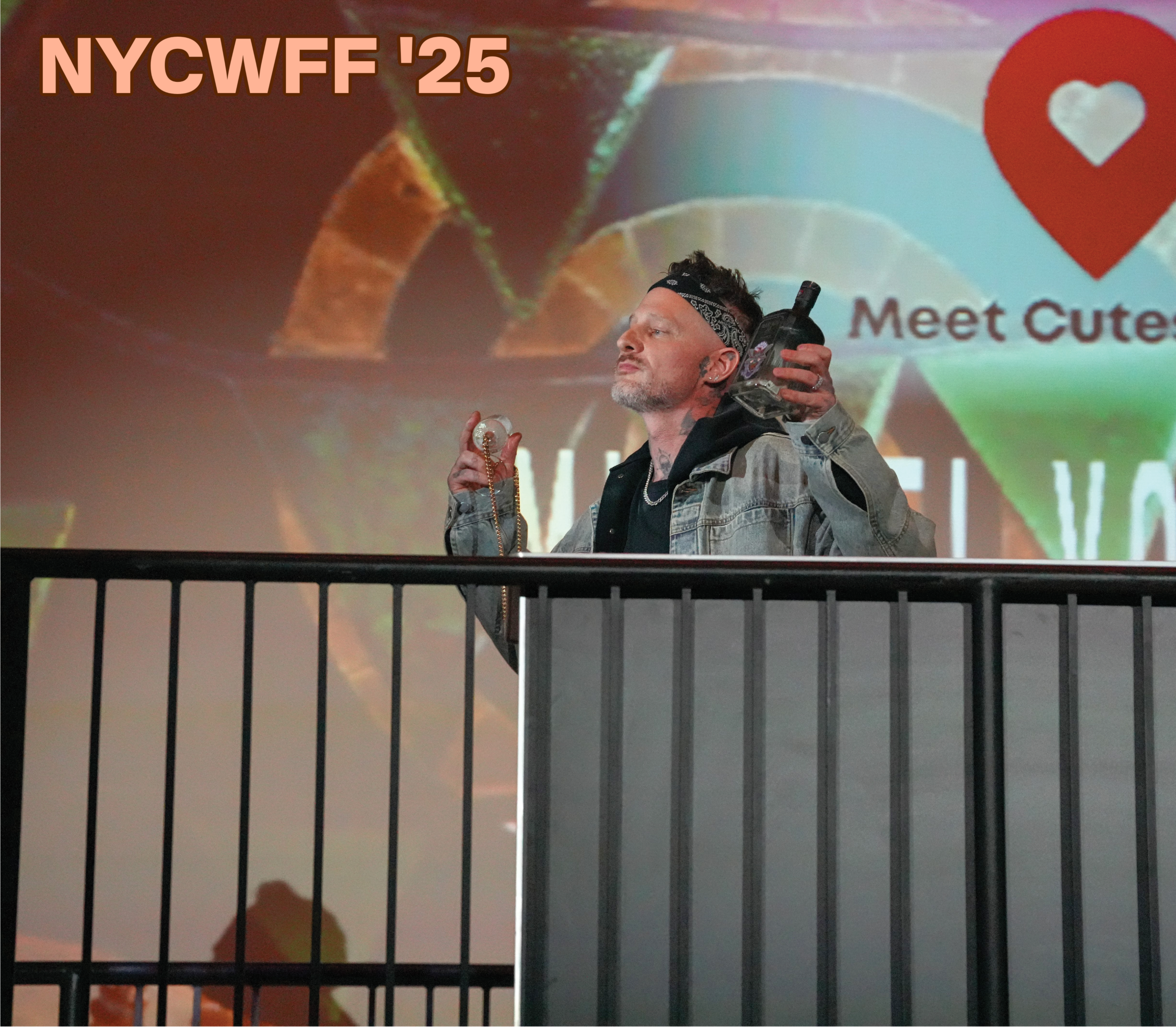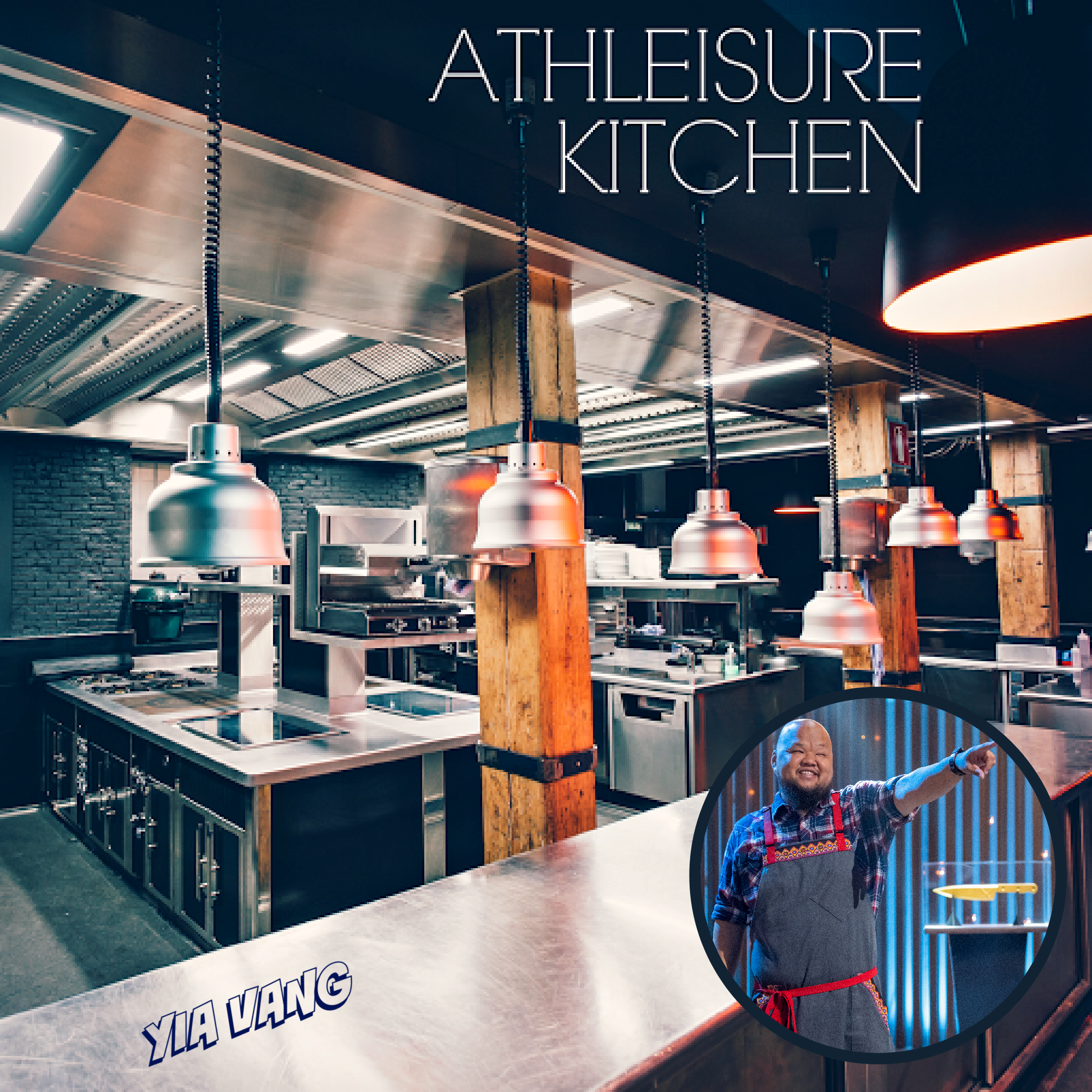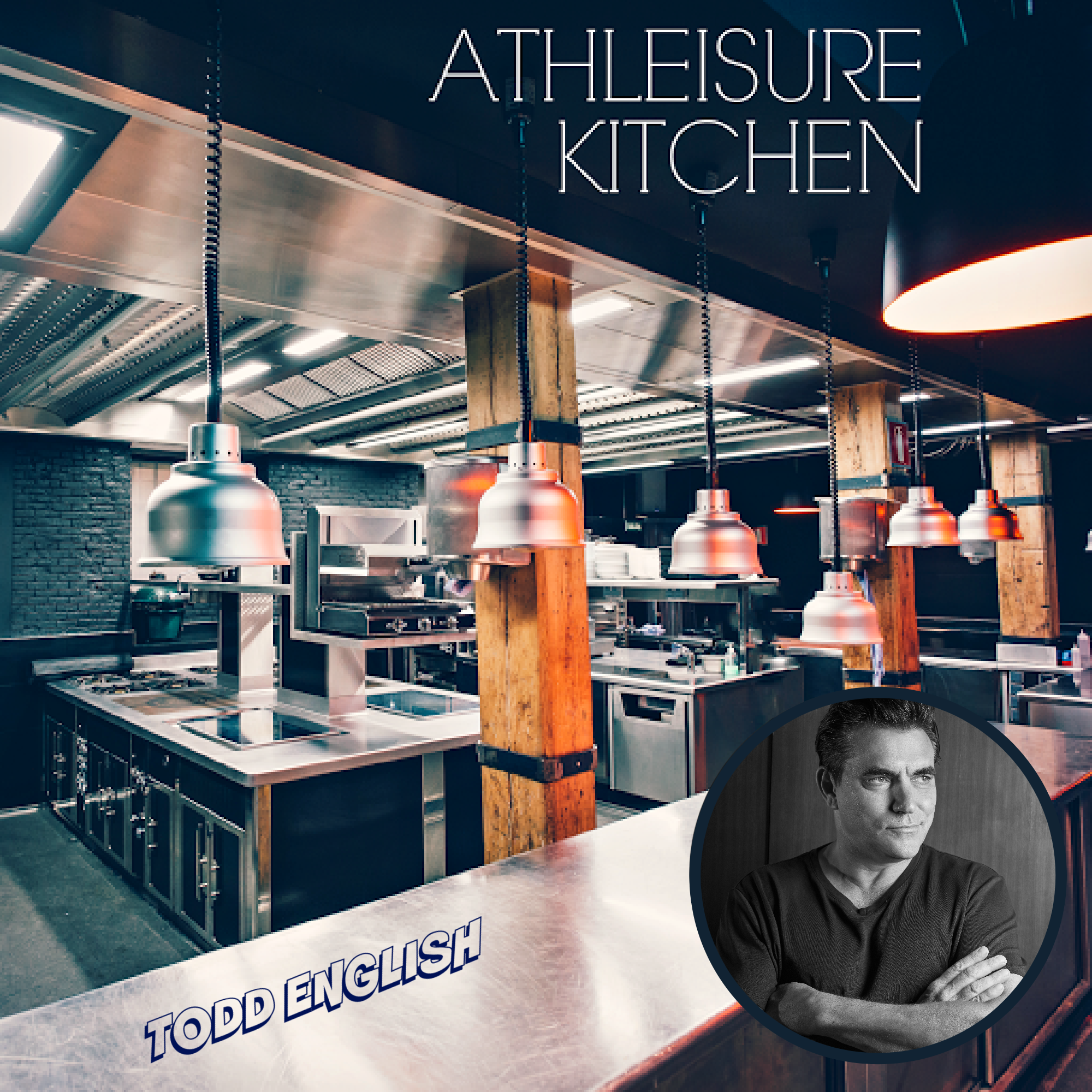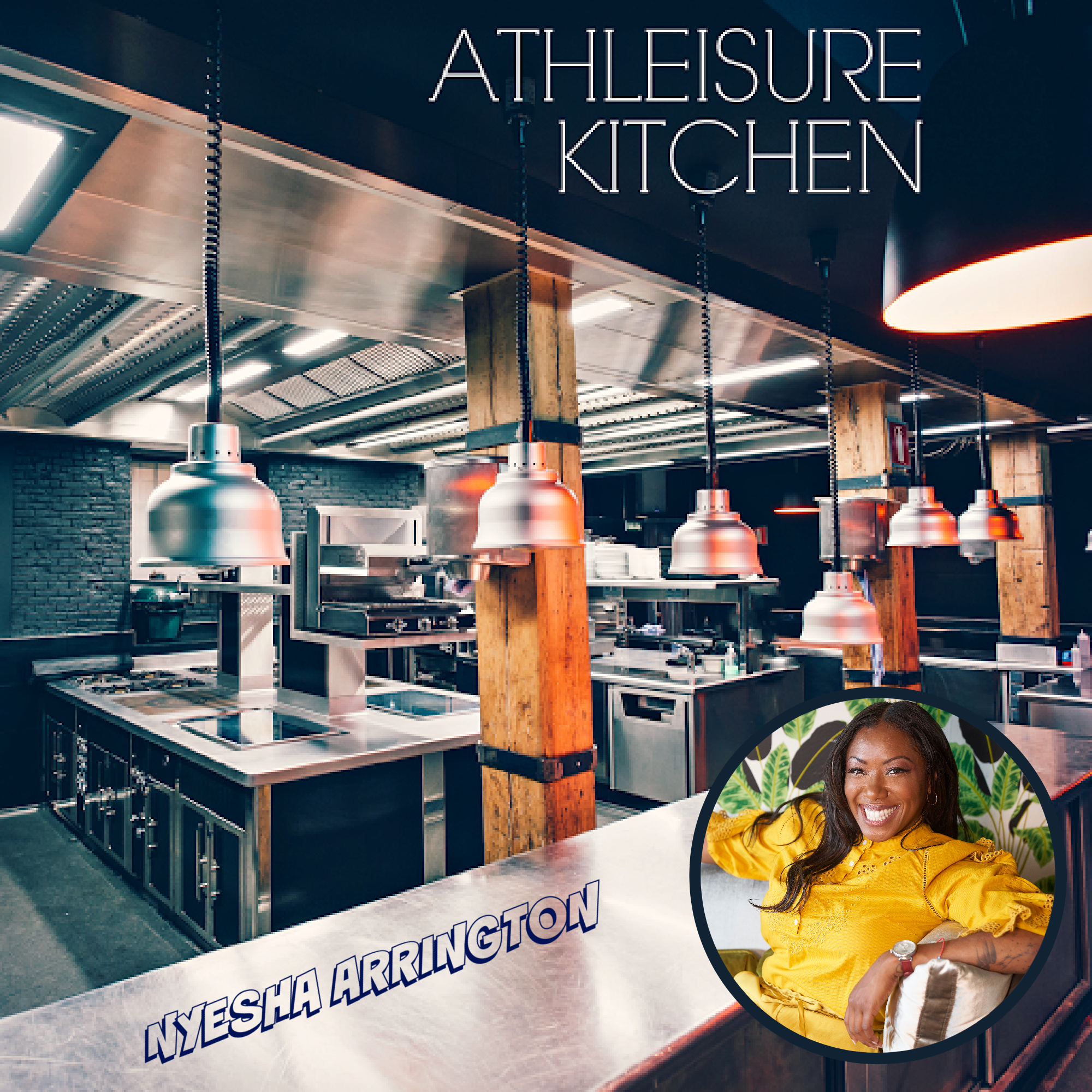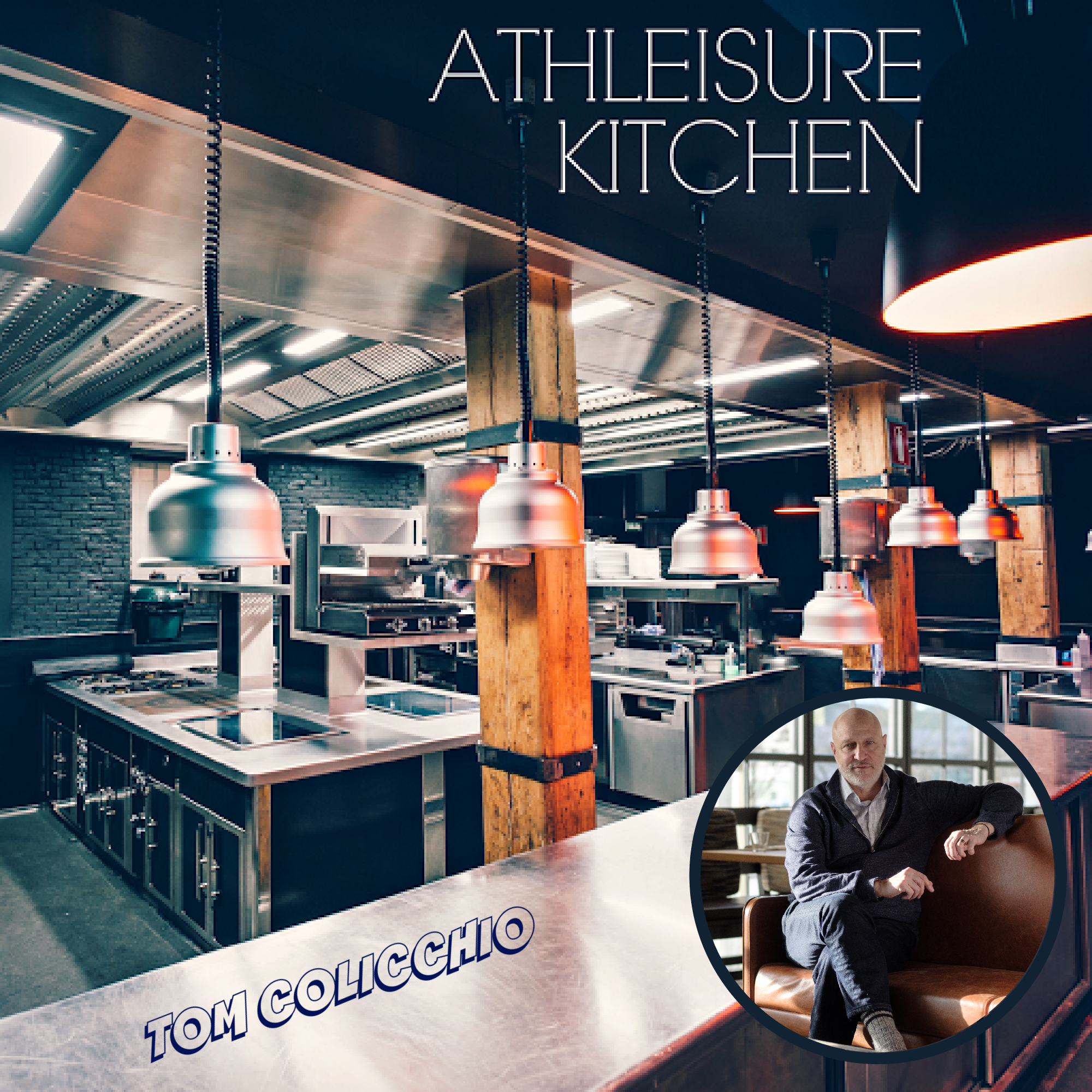When we want to tuck into a nice Mediterranean meal without having to hop a flight to our favorite destinations, we suggest that you need to make a reservation to Leonetta for a savory experience that is accented with fabulous cocktails and wines! Every dish that we enjoyed hit the spot and made us think about the next time that we planned on swinging by!
As this month’s The Art of the Snack, we sat down with Leonetta’s founder and Chef Ed Cotton, their Wine Program Director Torrey Grant, and Beverage Program Director Mark Rancourt. Together they provided more insight on this eatery that is a total vibe that you can enjoy on date night, with friends, family, and colleagues!
ATHLEISURE MAG: Before we delve into Leonetta, we’d love to know more about your background, Chef Ed Cotton, in terms of where you went to culinary school, as well as kitchens you trained in prior to opening this restaurant.
CHEF ED COTTON: I grew up in Massachusetts and attended the Culinary Institute of America. After graduating, I was fortunate to train under chefs like Daniel Boulud and David Burke, and served as the Corporate Executive Chef for Tourondel’s Hospitality Group, where I oversaw the culinary programs for 12 restaurants globally.
AM: We enjoyed seeing you in S7 of Bravo’s Top Chef. Why did you want to be on this show and what did you learn from participating in this cooking competition show?
CHEF EC: At first, the prize money and exposure were definitely enticing, but beyond that I’ve always been competitive and I genuinely enjoy cooking under pressure. Top Chef felt like the perfect arena to challenge myself, have some fun, and see how I stacked up against other talented chefs.
AM: Why did you want to open Leonetta?
CHEF EC: Leonetta is a very personal project for me. One of my first jobs was in Charlestown, Massachusetts, working under Todd English at Olives, a Mediterranean restaurant I absolutely loved. Opening Leonetta has given me the chance to return to that style of cooking — creating a menu rooted in those fun, bold flavors, while reconnecting with my own culinary beginnings.
AM: When did Leonetta open and what is the cuisine that can be enjoyed here?
CHEF EC: We opened Leonetta in the fall of 2024, and the cuisine is Mediterranean.
AM: What are the ingredients and spices that are indicative of this cuisine?
CHEF EC: There are so many different types of flavor profiles and ingredients when creating a Mediterranean menu. Some standouts are Zaatar, Sumac, Ras el hanout, Aleppo pepper, Black Persian limes, and spice blends that are both created inhouse and sourced from La Boite.
AM: For Lunch, what are 3 appetizers that you suggest that we should have in mind when coming in?
CHEF EC: LAMB TARTARE - Harissa Aioli, Mint, Sumac-Lavash Crisp, CHOPPED TUNA “PUTTANESCA” - Tomato, Olive, Capers, Anchovy, Sesame Grissini, and BLACK GARLIC HUMMUS - Toasted Everything Spice, Marinated Chickpeas.
AM: What are 3 mains for Lunch that we should consider when coming in with friends, family, and colleagues?
CHEF EC: GRILLED TUNA CLUB - Bacon, Pickles, Egg, Spicy Club Sauce, Herb Mayo & Potato Chips, LAMB PANINI - Fontina, Arugula, Caramelized Onion, Rosemary-Lamb Jus, and ROCK SHRIMP COUS COUS - Israeli Cous Cous, Zucchini, Arugula, Basil, Sun-Dried Tomato.
AM: To enhance our Lunch, what are 3 sides that we should share for the table?
CHEF EC: ZA’ATAR STEAK FRIES - Feta, Harissa Ketchup, Roasted mushrooms, Crispy Basmati rice, BAHARAT ROASTED MUSHROOMS - Sour Cherries, Cipollini Onions, and CRISPY BASMATI RICE - Medjool Dates, Black Mission Figs
AM: In terms of dessert, what are 3 options that we should be thinking about?
CHEF EC: CHOCOLATE PUDDING - Orange-Saffron Marmalade, Vanilla Chantilly, TIRAMISU - Coffee-Soaked Lady Fingers, Mascarpone, and OLIVE OIL SEMOLINA CAKE - Fior di Latte Gelato, Pine Nut-Rosemary Crumble.
AM: We had the pleasure of coming in for Dinner which was such a vibe. What are 3 appetizers that we should keep in mind?
CHEF EC: HAMACHI CRUDO “ACQUA PAZZO” - Pickled Watermelon, Lemon Mostarda, Calabrian Chili Ponzu, BEETROOT TZATZIKI - Dill, Garlic, Lemon, and JUMBO LUMP CRAB CEVICHE - Avocado, Cilantro, Radish, Sofrito Vinaigrette.
AM: To complete our meal, what are 3 mains that we should think about?
CHEF EC: ROCK SHRIMP COUS COUS - Israeli Cous Cous, Zucchini, Arugula, Basil, Sun-Dried Tomato, BRICK CHICKEN “PEPERONATA” - Esposito Pork Sausage, Peppers & Onions, and PORK SHANK SHAWARMA - Pita Bread, Tumeric Pickles, 6th Ave White & Red Sauce.
AM: To complete this culinary spread for Dinner what are 3 sides that we should have in mind?
CHEF EC: Our dinner menu shares the same sides as the lunch menu, and you can add in the CHARRED BROCCOLINI - Lemon, Anchovy, Ricotta Salata.
AM: Dessert is always a great way to end a meal - what are 3 desserts that we should think about?
CHEF EC: Our dinner menu shares the same desserts as the lunch menu, and you can add in the GELATO & ALMOND BISCOTTI (Choice of Three Scoops) and YOGURT PANNA COTTA - Blood Orange Caramel, Pistachio.
AM: We love a signature cocktail. What are 3 that we should enjoy?
CHEF EC: ITALO DISCO - redacted mediterranean lemon gin, aperol, bitter bianco, yuzu sake, sicilian lemonade, PALOMA PICASSO blanco tequila, grapefruit, cartron bergamote, combier pamplemousse, fevertree grapefruit soda, and PEPINO FIZZ - japanese whisky, rockey’s botanical, antica torino genziana, dolin dry vermouth, matsui umeshu, lemon, cucumber soda.
AM: Torrey, you are Leonetta’s Wine Program Director, tell us about your flight program, which we had the pleasure of enjoying.
TORREY GRANT: We offer 3 separate wine flights now, which consist of 3 wines each served in 3 ounce pours. Each flight is themed with a different destination: Greece, Italy, and the Islands. Guests receive a “boarding pass” that explains the wines and sets the tone for the experience. It’s a cool way for guests to try several wines at once and not commit to one glass or a bottle.
AM: Mark, you’re Leonetta’s Beverage Program Director and Brunch is our favorite meal of the week. Tell us about 3 dishes that we should consider and what cocktail would you pair with it?
MARK RANCOURT: BABKA FRENCH TOAST - Whipped Cheesecake, Wild Berries, Orange Blossom Syrup - If you’re going the “dessert-for-breakfast” route, let’s go all in. Replace your morning coffee with an Espress-O’Tini. A fresh shot of premium espresso paired Teeling Small Batch Irish Whiskey, Madagascar Vanilla, Banana Liqueur, and Cafeto, Mexican Coffee Liqueur
WILD MUSHROOM SCRAMBLE - Farm Eggs, Black Truffle, Sesame Crostino - Let’s stay light and bright by pairing with our Cardoon Spritz. Crisp cava bubbles along with tangy, tropical passion fruit counter-balanced by Cardamaro, a slightly bitter Italian wine and artichoke-based amaro from the Piedmont region.
SHAWARMA SPICED BACON - All that savory, spicy flavor needs one thing... more savory spice! Order the Leonetta Bloody Mary. The garden-fresh flavor of St. George Green Chile Vodka paired with pureed tomato, char-roasted red pepper, capers, lemons, horseradish, and North African harissa to deliver a most delicious version of the brunch staple.
AM: Tell us about your Aperitivo Hour as this is always a great way to end the day or to be a gateway to a fun night out.
CHEF EC: Our Aperitivo Hour is something we offer during the summer months that is all about that Italian tradition of winding down the day with a spritz, small bites, and friends. We offer shareable snacks — cured meats, cheeses, olives and country bread — alongside a select menu of Negronis, Spirits, and wine. It sets the stage whether you’re heading into dinner or just enjoying a relaxed evening.
AM: As we navigate from the Summer into the Fall, will there be new additions to the menu that we should know about?
CHEF EC: Yes, we’re really excited about some new fall additions. We’ll be introducing a Vegan Bolognese that’s hearty and comforting, perfect for the season. Our hamachi crudo will get a fresh update with new fall flavors, and we’ll be expanding both the raw bar and pasta selections to highlight what’s best right now.
Our Hamachi Crudo will get a fresh update with new fall flavors, and we’ll be expanding both the Raw Bar and pasta selections to highlight what’s best right now.
AM: Are there upcoming events that we should keep in mind as we look ahead to the Fall and Holiday season?
CHEF EC: Absolutely — we have a really fun lineup ahead. Our cocktail lounge, Leo’s Famous, is kicking things off with a Halloween party where guests are encouraged to dress as a ‘famous Leo’ — whether it’s Leonardo DiCaprio or your favorite celebrity born under the Leo sign. For Thanksgiving, we’ll be offering a special menu that celebrates the holiday with Italian flair. In December, we’re rolling out festive Christmas cocktails that are perfect for celebrating with friends and family. And of course, we’ll be closing out the year with a big New Year’s Eve party here at Leonetta — a lively way to ring in 2026 with great food, drinks, and energy.
IG @leonettanyc
PHOTOGRAPHY COURTESY | Leonetta
Read Athleisure Mag’s SEP ISSUE #117 and see THE ART OF THE SNACK | Leonetta in mag.







